The year is 1946. You are a man of the world. Bold and sophisticated. A true musical connoisseur.
In your stately home you use music to relax and to entertain. Your Magnavox Regency 155 combination Radio/Phonograph, with state-of-the-art dual 12″ speakers, serves you well for many decades. After many long and fruitful years, the day will come that you will pass into the next life; and then I will build a guitar amp from your Enormous Radio.
*************
******
***
When I did in fact purchase this gigantic ‘Instrument,’ as the manual called it, it was far too large to fit in my car. So with some basic hand-tools I dissected my $25 dollar purchase in the faded parlor where it had sat for a lifetime. I removed the radio chassis (mostly junk save for some 6J5 tubes), the later-added GE RIAA phono pre (sold on eBay), the 25 watt amplifier chassis (salvaged the tubes, output and phase-inverter transformers), and two 12″ Magnavox field-coil speakers.
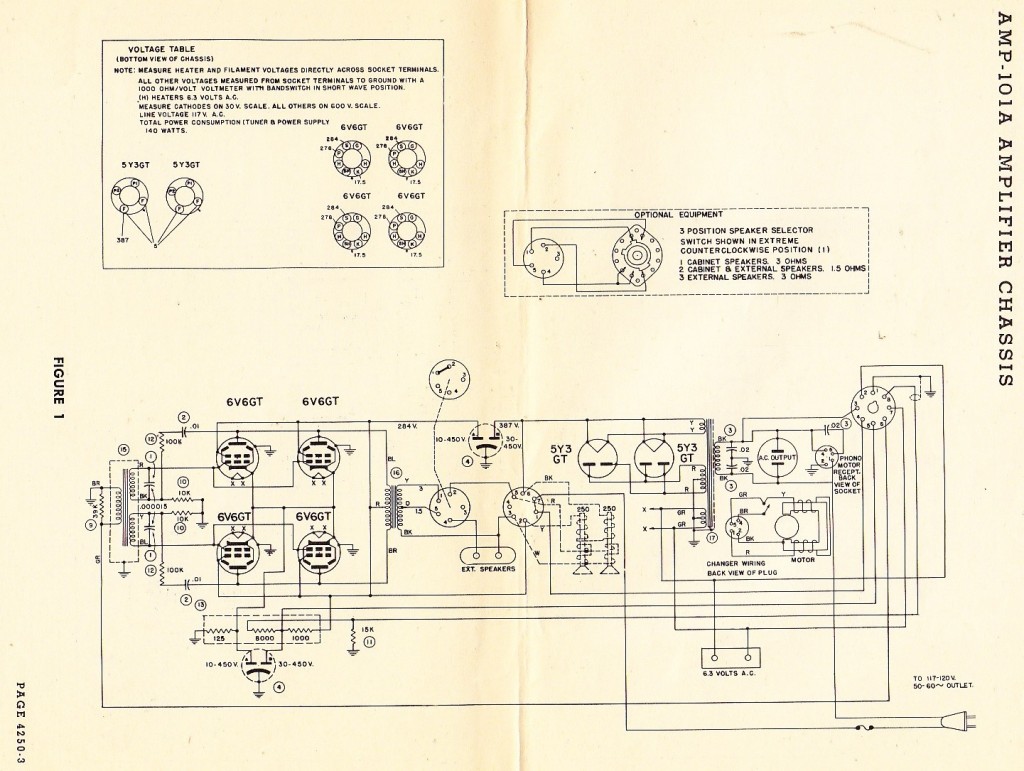 Luckily, my purchase came complete with all the manuals, service guides, and original warranty card. Using the schematic I was able to see how the ‘field-coil’ speakers function in this type of amplifier.
Luckily, my purchase came complete with all the manuals, service guides, and original warranty card. Using the schematic I was able to see how the ‘field-coil’ speakers function in this type of amplifier.
In my previous post on field coil speakers, I went into some detail about this technology and its relationship to more modern speakers. Now the time had come to actually build a working audio device using this antique technology.
I have completed the piece, and in this article I will describe some of the challenges faced, techniques used, and offer some audio examples of the end result. This is a somewhat long article, so if you just want to hear the audio, skip to the end…
FOLLOW THE LINK BELOW TO READ ON….
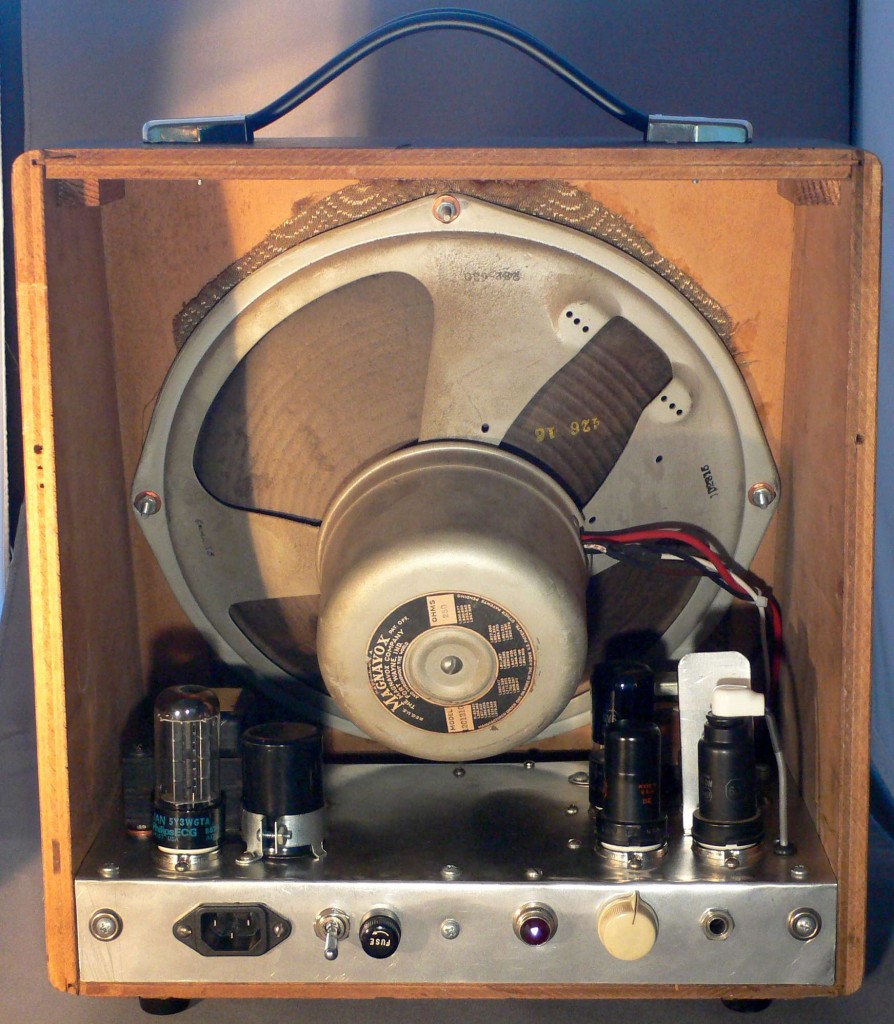 I had on-hand an old wall-hanging speaker baffle sized for a 12″ speaker. Perfect. Based on the working space left in the box after I fabricated a 2″ tall aluminum chassis, I figured that I could fit a 5 or 6 tube amplifier with modest sized transformers. This put me in the 12-watt amp range. Since old Valco amps are popular these days, and many older Valcos used field-coil speakers, this seemed as good a starting point as any. I selected the Valco 1600 ‘Supreme’ schematic since it looked like it would have a little more gain (level) due to it’s 6SC7 (rather than 6SN7) phase inverter.
I had on-hand an old wall-hanging speaker baffle sized for a 12″ speaker. Perfect. Based on the working space left in the box after I fabricated a 2″ tall aluminum chassis, I figured that I could fit a 5 or 6 tube amplifier with modest sized transformers. This put me in the 12-watt amp range. Since old Valco amps are popular these days, and many older Valcos used field-coil speakers, this seemed as good a starting point as any. I selected the Valco 1600 ‘Supreme’ schematic since it looked like it would have a little more gain (level) due to it’s 6SC7 (rather than 6SN7) phase inverter.
Above is a stock image of (what I believe to be) the correct iteration of ‘1600 supreme.’ Here is the schematic for anyone who cares:
I built the circuit as indicated above, with one change: I added an extra stage of filtering to the power supply so that the 6V6 Grid 2’s could run at a lower voltage than the plates.
When I powered it on… nothing. No sound. The voltages were all correct, but there was no sound. I remembered that when i QC’d the speakers months ago, I only listened to the voice coils – I did not fully understand the implementation of the ‘Dummy Coils’ at that tine. When I wired it all up together yesterday, I assumed incorrectly that the dummy coils should work fine, as they are made of very robust wire. I was wrong. It turned out that the speaker’s dummy coil was open (broken).
The Dummy Coil is an interesting concept in hum-reduction. Basically it forces an out-of-phase Hum signal directly from the power supply into the speaker voice-coil. The net effect is… Wow. no hum. None at all. It really works remarkably well. For an excellent and thorough explanation of this technology, with illustrations, visit this site: LINK.
Anyhow, luckily, my Regency 155 purchase came with two of these speakers, and the 2nd one did in fact work fine, dummy coil included.
You will notice on the speaker label that ‘250 ohms’ is indicated. This confused me until I discovered that this naming convention refers to the resistance of the Field, not the voice coil. The fact that it is precisely ‘250 ohms’ is not critical; what IS critical is that 250-ohms puts this speaker driver into one of 2 categories. This is a field which is designed to serve as the filter choke in the amplifier power supply. This is much different than, say, a 2000 ohm field. A 2000-ohm field would be hooked up between the B+ and ground. Very different arrangement. Anyhow…
OK so now the amp is working. It’s fine at low gain, but at high volume it oscillates wildly, and it had some RF issues as well. Isolated the problem to the 6J7 pentode input stage. After about 2 minutes of poking around and moving leads around, I decided to just ‘fuck-it’ and rebuild that stage as a 6J7 triode stage, using the RCA Ba2C circuit that I like so much as a model.
I have built this circuit many many time and I know that it is very clean and stable. I made the changes, and a few minutes later I was cooking. MUCH better. But still oscillating at the top 20% of the the gain swing! Shit. I then tried a bunch of different tricks: suppressor caps, shortening the (already very short) leads, loading the input grid of the phase inverter… nothing would eliminate the problem.
I did notice, however, that when i put my hand near the input grid cap of the 6J7, the problem went away. I substituted a piece of aluminum for my hand, and this also did the trick. I think the following situation was in play: since I had to build this thing so tight in order to the fit the cabinet, I had placed the input tube too close to the output tubes. The device was therefore feeding-back theremin-style through the air. The fix? Fabricate a small shield to go behind the input tube. What-up-done.
***********
*******
***
Alright so we are all finished. How does it sound? It is fun-as-hell to play. This is by far the most compressed-yet-expressive push-pull amp that I have ever played. It’s interesting to my ear because the harmonic breakup tells me that I am playing a push-pull amp, but the dynamic feel is more like a single-ended amp.
I mic’d up the amp with a 414 in omni, high-pass at 40hz. No other processing was used. Here are two audio examples. The volume pots on both the guitar and amp are at 100%. I used a Gibson Firebird guitar. The first clip features the next pickup, and the second features the bridge pickup. Check out the range of sounds that are possible simply by varying pick attack.
Alright so that about wraps it up. I will definitely be on the lookout for more field-coil speakers. They sound cool and they save the expense of a choke transformer! My little ‘Superior’ amp discussed in this article will be on sale shortly at Main Drag Music in Williamsburg Brooklyn.
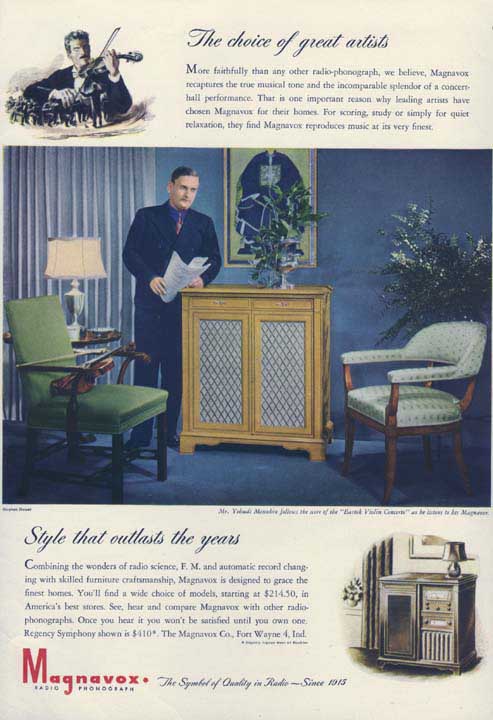
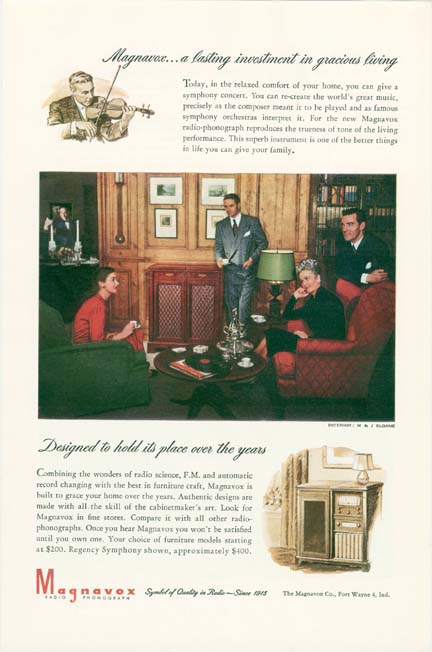
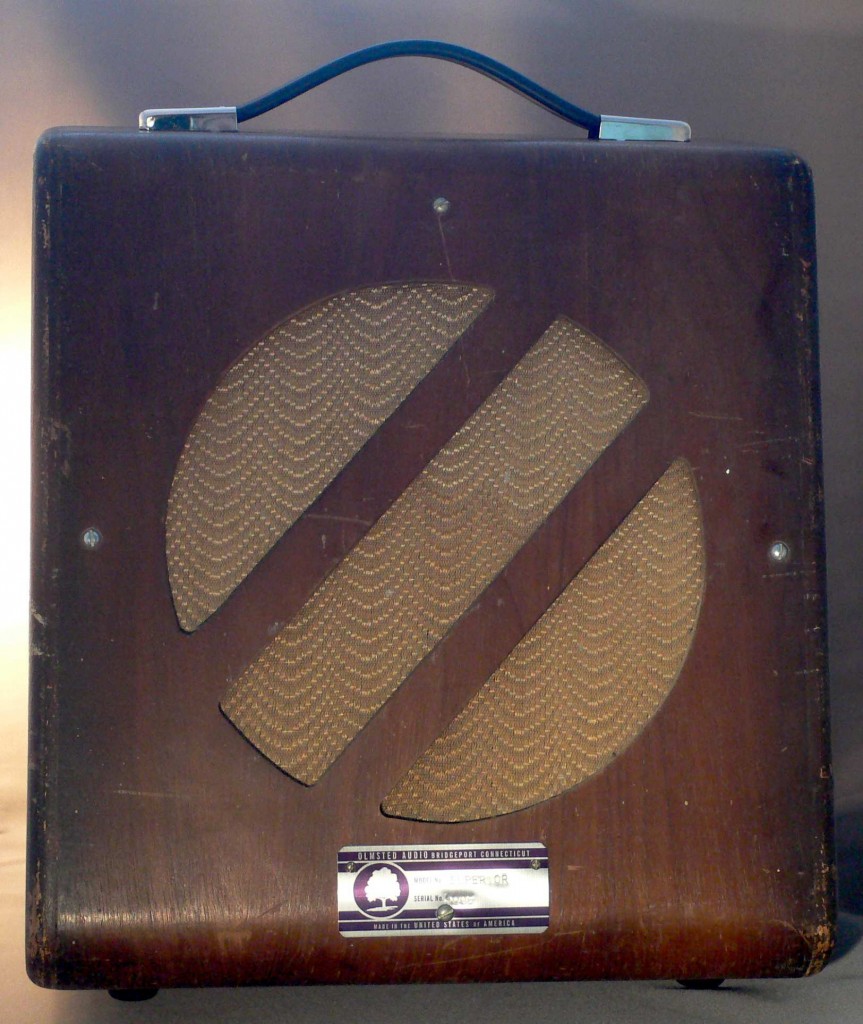
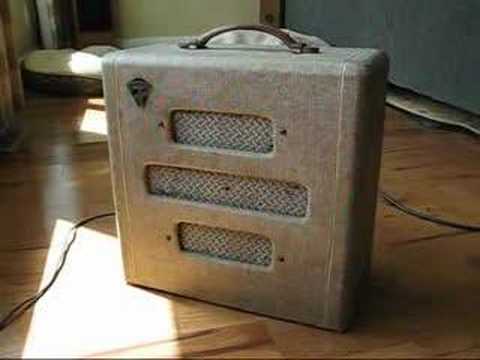
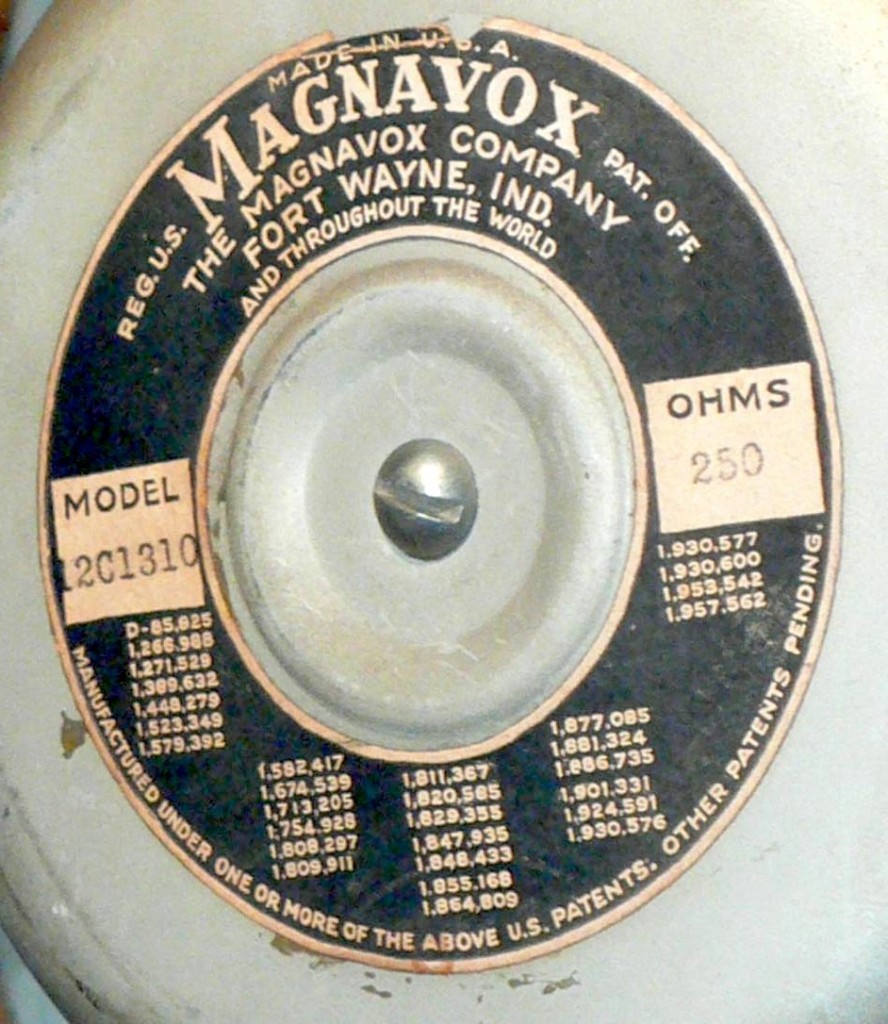
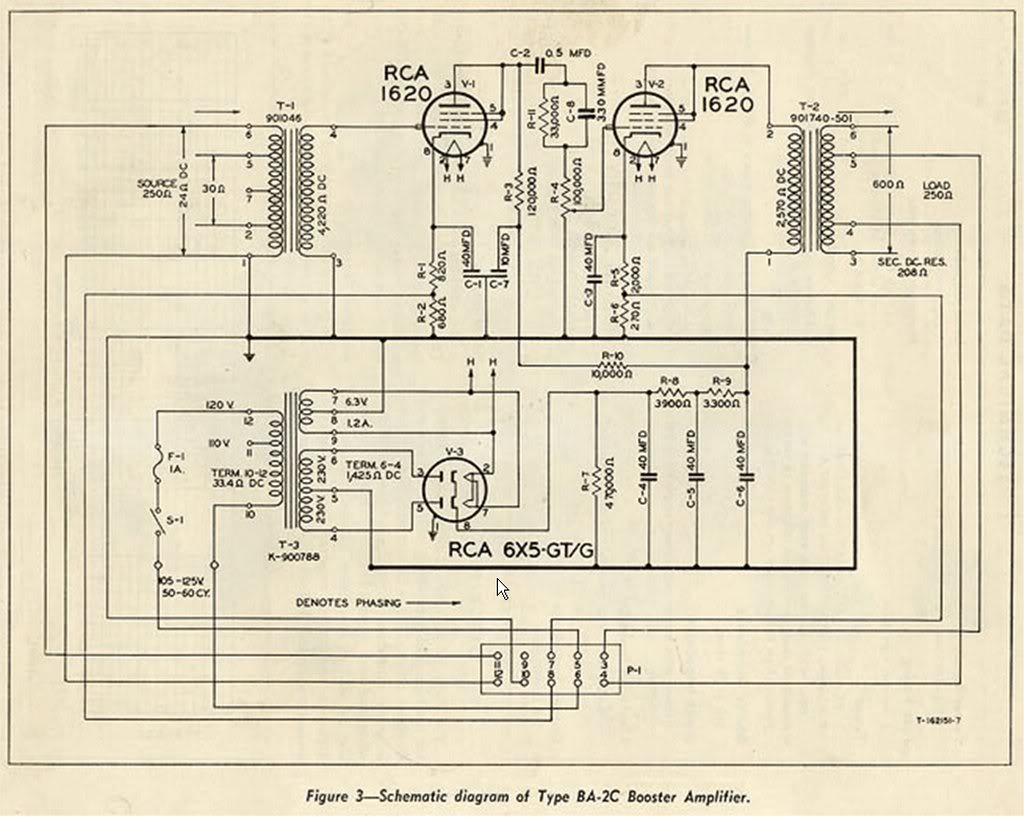
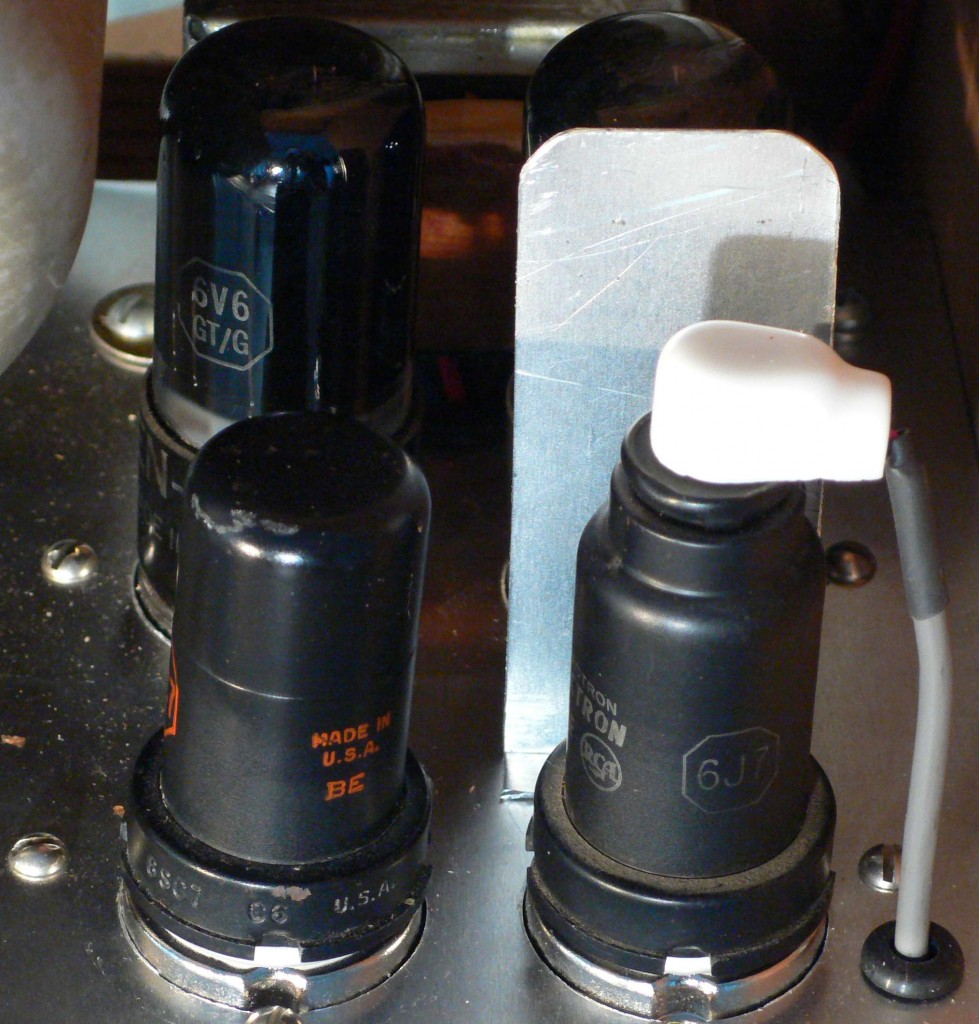
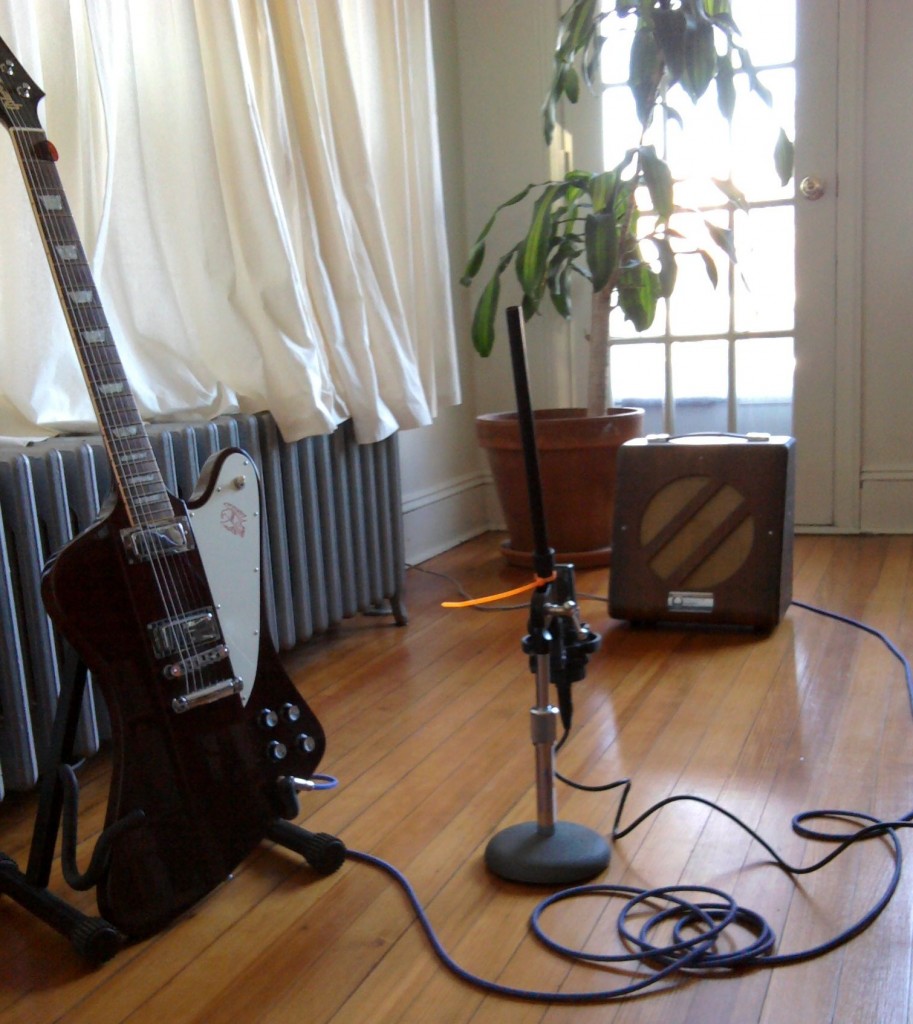
11 replies on “The Field-Coil Guitar Amplifier”
Eddie Van Gelous is a chill bro giving sound advice.
-Don Von Voltron
haha. welcome dude. c.
Sounds great man. Just wondering if a modern implementation of FC speakers could yield an additional control for amp builders? Would it be useful say to adjust the DC FC voltage for a different response if so desired?
Absolutely. There was a dude in the UK a few years ago who was making a marketing guitar amps that used lower-voltage, higher-current fields, and the amps had a knob to adjust the field voltage. the result is basically that the speaker had infinitely variable efficiency – so you could truly get the ‘cranked’ sound of the amp at ANY volume. simple, efficient design. i cannot seem to find evidence of this guy any longer… maybe one of you readers can help?
check the patent granted to FluxTone speakers
yes lowering fc dc voltage allows for lower volume but retains the tone.
I’ve got a Gibson BR-6f field coil and have always dug the compression, and it really does sound SE – if not pushed. Also uses a 6SJ7 pentode preamp. With the low voltages in the driver & preamp & no cathode bypass on the power tubes, it would have to be harmonica heaven – they also use a local FB loob from the plates of the power tubes > 500k resistor to the plates of the paraphase inverter! I understand these were made for schools, and probably took forever to wear out tubes no mater how hard they pushed it – although the 6V6 are biased pretty hot with only a single 200 ohm & 300 V on the plates & screens, I lowered the screens to 285
GibsonBR-6fschematic on photobucket MOD01
Very cool riff in your bridge demo, are you thumpin the bass note AND picking the other lead riff at the same time? Man I hope for my sake the bass note is a loop, I don’t think I could do – even with many, many hours of dedicated practice
hi craig. yes i think it’s always a good idea to run the screens at a slightly lower voltage. I honestly don’t know where I got that idea but I’ve certainly stuck to it.
regarding the demo: that’s just a single live gtr pass, no FX. I play lead and rhythm at the same time. usually in Drop D but this example is in standard tuning. c.
You play with a thumb and fingerpicks?
no picks.
Just “Found out” about field coil speakers this month. When I was a wee lad, I used to knock the heck out of alnico speakers to extract the excellent magnet I would play with for months, hence I had a hidden bias against the Field Coil variety of speaker (a big disappointment, No magnet ! %$*!@#! Fast forward several years, and I starting to play guitar in rock bands, still within the prevailing Perma Magnet culture. Now Middle aged (to say the least), and bought a vintage Valco Supro…
What a Sound !!!! Still have my garden variety Marshall, but the Valco Supro with the field coil speaker brings some incredible tone that can’t be had by any ‘Modern’ amp, it’s like comparing an apple to an orange really.
My strong suspicion that the field coil speaker is responsible for the great tone and dynamic range is ‘Amplified’ ( hehe ) by this articles conclusions. Thanks for putting together that great amp, and the fantastic description of your build, and final test of the cool little amp ! I am going to actively seek out amps with field coil speakers from now on. Once again, Thanks!